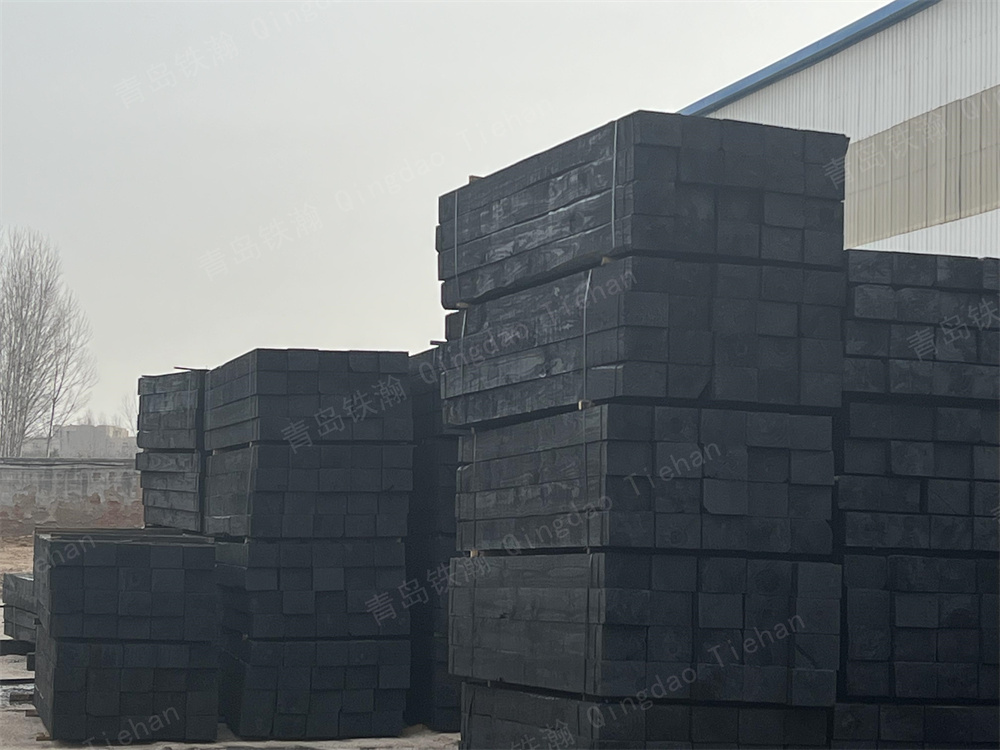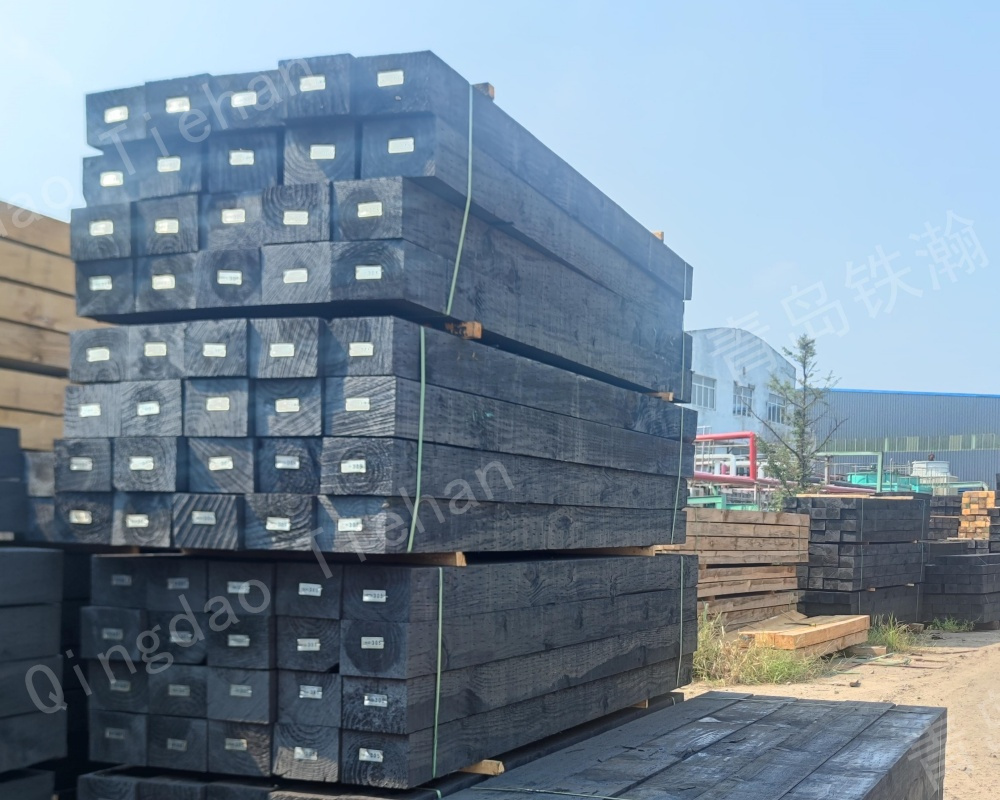In modern society, trains have become one of the important means of transportation for people to travel, and anti-corrosion sleepers for train turnouts and ordinary anti-corrosion sleepers are important components of train track construction. Although their purpose is to enhance the stability and safety of the track structure, there are certain differences in material, structure, and usage effects between the two. Below, Qingdao Tiehan and everyone will analyze the difference between anti-corrosion sleepers for train turnouts and ordinary anti-corrosion sleepers.

The main difference between switch anti-corrosion sleepers and ordinary anti-corrosion sleepers is their length. The anti-corrosion sleepers for turnouts are usually longer than ordinary sleepers because turnouts need to achieve train turning in different directions, and the steel rails need longer support on the horizontal span to ensure normal train operation. In addition, there are usually some specially designed protrusions or grooves at the bottom of the anti-corrosion sleeper of the turnout to better secure other components of the turnout and ensure the safety and stability of the train when passing through the turnout. However, ordinary anti-corrosion sleepers do not have these additional designs.

According to current national standards, ordinary sleepers generally come in two sizes: 160 * 220 * 2500 (mm) and 145 * 200 * 2500 (mm), while switch sleepers are different and can be divided into two types: 20 base and 15 base. The size range of 20 base type turnout sleepers is 160 * 240 * 2600-4800 (mm), which means the width and height of the sleepers are 160 * 240 (mm), and the length starts from 2600mm, with each additional 20mm being a specification, and continues up to 4800mm. The size range of 15 base type turnout sleepers is 160 * 220 * 2600-4850 (mm). Similarly, the width and height of sleepers are 160 * 220 (mm), and the length starts from 2600mm. Each additional 15mm is a specification, which is added all the way up to 4850mm.

Finally, there are certain differences in the effectiveness of using anti-corrosion sleepers for train turnouts compared to ordinary anti-corrosion sleepers. Ordinary anti-corrosion sleepers are mainly used for fixing and supporting straight tracks, and their effectiveness is mainly reflected in improving the stability and safety of railways, reducing bumps and noise during train operation. The anti-corrosion sleepers for train turnouts are mainly used for turning and diverting the turnout part, and their use effect is mainly reflected in increasing the smoothness and smoothness of the train passing through the turnout, reducing the swing and lateral force of the train at the turnout, and avoiding accidents.
There are certain differences in length, size standards, and effectiveness between railway turnout anti-corrosion sleepers and ordinary anti-corrosion sleepers. It can be said that in railway construction and maintenance, selecting suitable anti-corrosion sleeper materials and structural design is crucial to ensure the safe operation and efficient passage of the railway. I hope that in future railway construction, more attention can be paid to the use of anti-corrosion sleepers for train turnouts, providing a safer and more comfortable environment for people's travel.